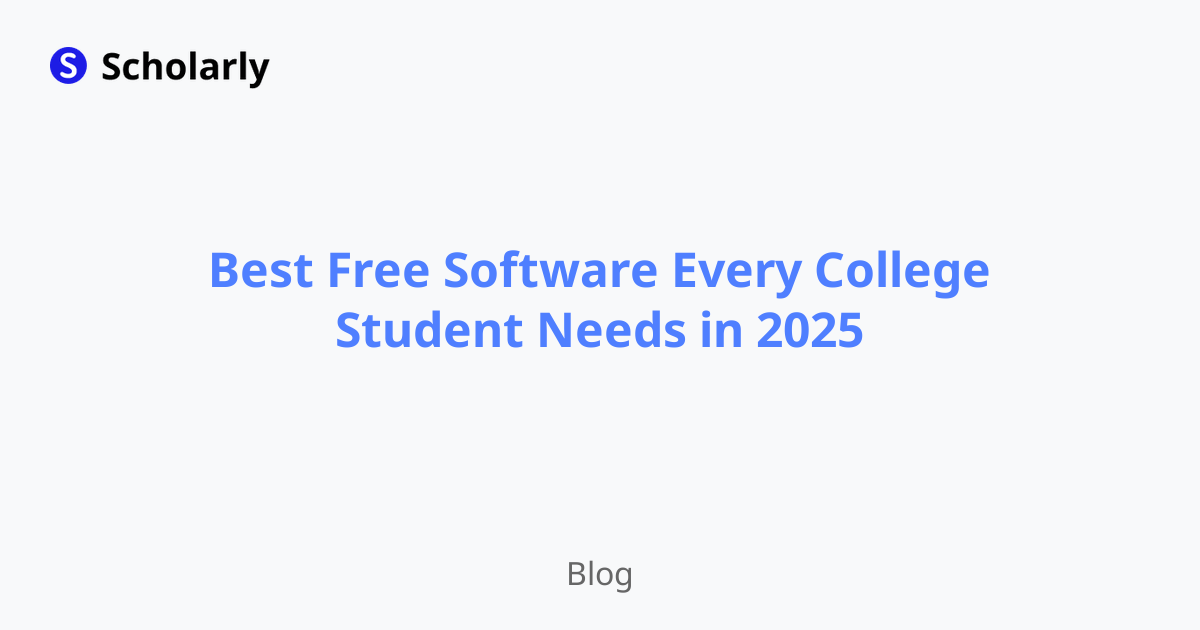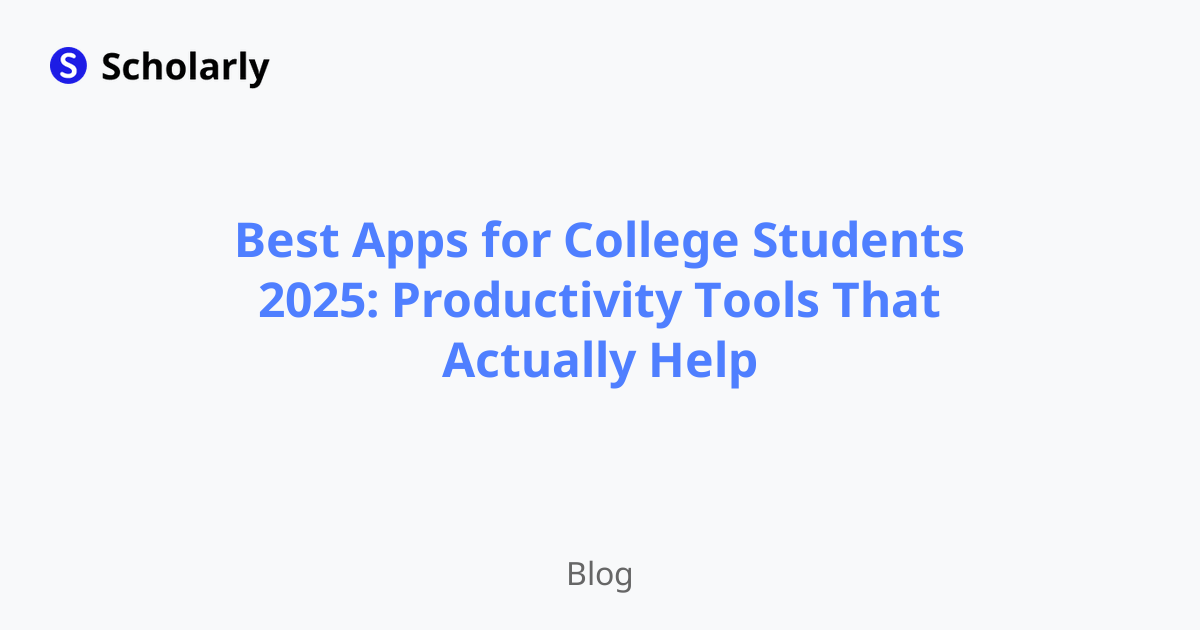Best Free Software Every College Student Needs in 2025
Discover essential free software that can save college students thousands of dollars while boosting productivity, creativity, and academic performance.

Introduction
College students face significant software costs for everything from word processing to statistical analysis, but free alternatives now rival expensive commercial programs. Smart students can build a complete digital toolkit without spending a penny, accessing professional-grade software for writing, research, design, programming, and productivity. This comprehensive guide reveals the best free software across all categories that college students need in 2025.
Methods
1. Essential Productivity Suite
LibreOffice (Microsoft Office Alternative)
- Word processing, spreadsheets, presentations, database management
- Full compatibility with Microsoft formats
- Available on Windows, Mac, and Linux
- Advanced features like mail merge, pivot tables, and complex formatting
Google Workspace (Cloud-Based Collaboration)
- Real-time collaboration on documents, sheets, and slides
- Automatic saving and version history
- Access from any device with internet connection
- Integration with Gmail and Google Drive storage
2. Academic Writing and Research
Zotero (Reference Management)
- Automatically capture citations from websites and databases
- Generate bibliographies in any citation style
- Organize sources with tags and folders
- Integrate with word processors for in-text citations
Grammarly (Writing Assistant)
- Advanced grammar and style checking
- Plagiarism detection (premium feature, but basic version is excellent)
- Browser extension works across all platforms
- Suggestions for clarity, engagement, and delivery
3. Design and Media Creation
GIMP (Photo Editing)
- Professional-level image editing capabilities
- Comparable to Adobe Photoshop for most tasks
- Extensive plugin ecosystem
- Support for all major image formats
Canva (Graphic Design)
- Templates for presentations, posters, social media, and more
- Drag-and-drop interface suitable for beginners
- Stock photos, icons, and fonts included
- Collaboration features for group projects
4. Programming and Development
Visual Studio Code (Code Editor)
- Lightweight but powerful code editor
- Extensions for virtually every programming language
- Integrated terminal, debugging, and Git support
- IntelliSense code completion and syntax highlighting
Git/GitHub (Version Control)
- Track changes in code and documents
- Collaborate on programming projects
- Portfolio platform for showcasing work
- Free private repositories for students
5. Statistical Analysis and Mathematics
R and RStudio (Statistical Computing)
- Comprehensive statistical analysis capabilities
- Extensive package ecosystem for specialized analyses
- Excellent data visualization tools
- Standard in many academic and industry fields
Python with Anaconda (Data Science Platform)
- Complete data science environment
- Jupyter notebooks for interactive analysis
- Includes NumPy, Pandas, Matplotlib, and other essential libraries
- Machine learning capabilities with scikit-learn
6. Note-Taking and Organization
Obsidian (Connected Note-Taking)
- Link-based note system for building knowledge networks
- Graph view to visualize connections between ideas
- Markdown formatting for cross-platform compatibility
- Extensive plugin ecosystem for customization
Notion (All-in-One Workspace)
- Combines notes, tasks, databases, and calendars
- Templates for course planning and project management
- Team collaboration features
- Powerful database and relation capabilities
Benefits
- Massive Cost Savings: Professional software worth thousands of dollars available free
- Professional Skills: Learn industry-standard tools without financial barriers
- No Licensing Restrictions: Use software freely for academic and personal projects
- Community Support: Large user communities provide tutorials and assistance
- Cross-Platform Compatibility: Most free software works on Windows, Mac, and Linux
Challenges
- Learning Curves: Some professional software requires time investment to master
- Feature Limitations: Free versions may lack some advanced features of paid alternatives
- Support Differences: Less formal customer support compared to commercial software
- Compatibility Issues: Occasional formatting problems when sharing files with users of commercial software
Conclusion
Free software has reached professional quality across virtually every category students need. By building skills with these tools during college, you'll graduate with valuable technical abilities without student debt from expensive software licenses. Start with the basics and gradually expand your toolkit as you discover specific needs for your major and career goals.
Try Our Popular AI Study Tools
Transform your study materials into interactive learning experiences with our most popular AI-powered tools:
PDF to Flashcards
Convert lecture notes and textbooks into study flashcards instantly
Text to Flashcards
Turn any text or notes into comprehensive flashcard sets
Image to Flashcards
Convert diagrams and handwritten notes into digital flashcards
YouTube to Flashcards
Generate flashcards from educational video content



